Oil paintings - selected works
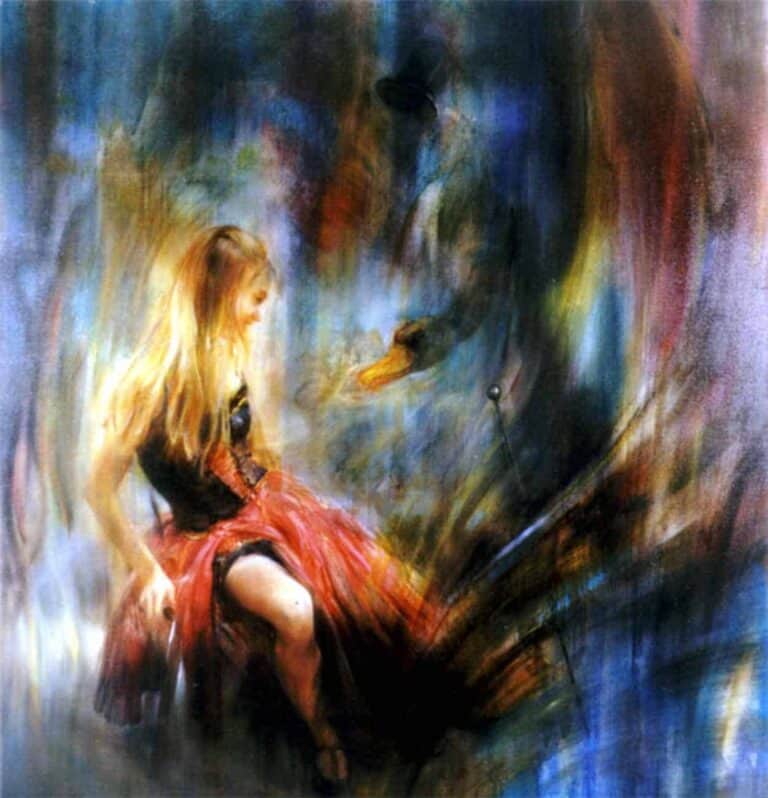
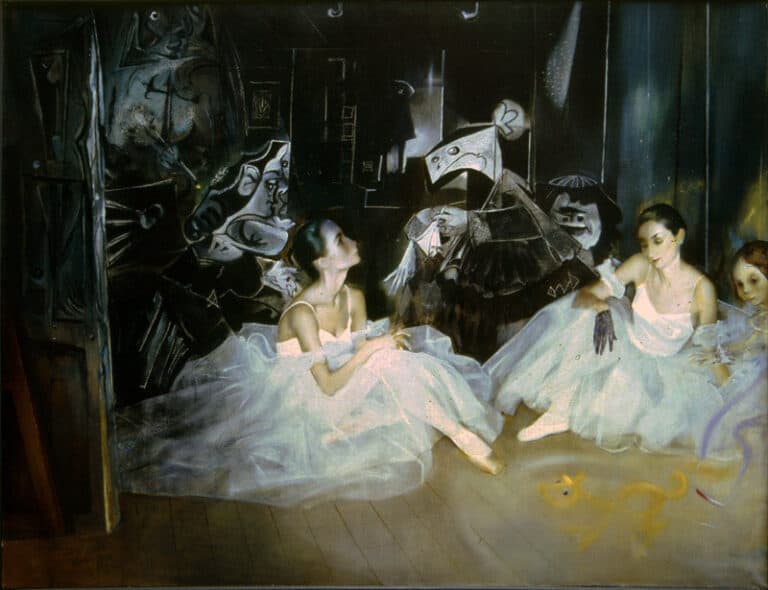
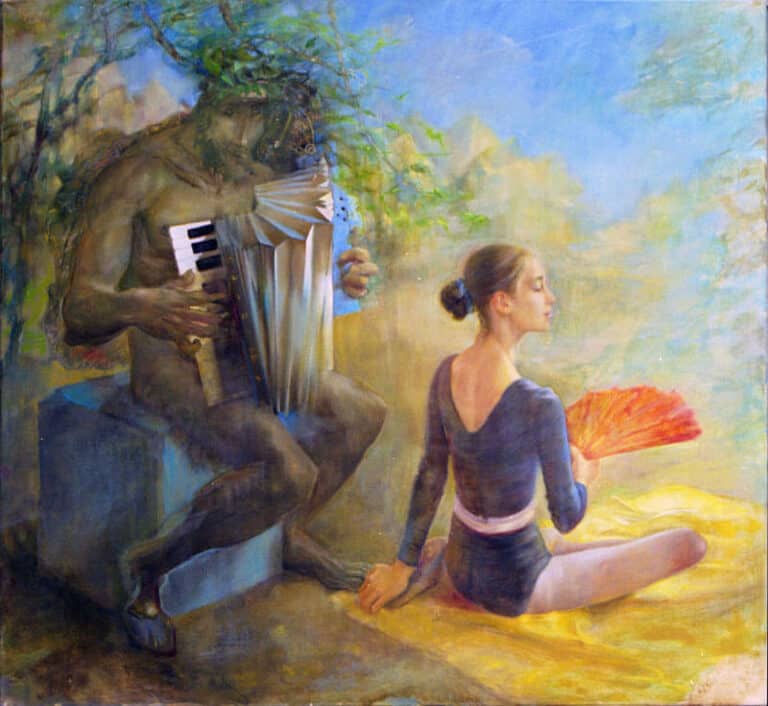
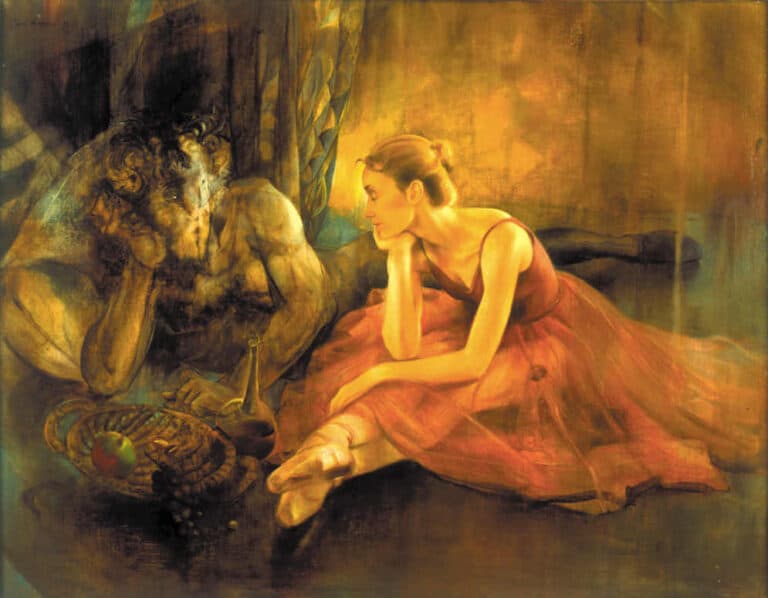
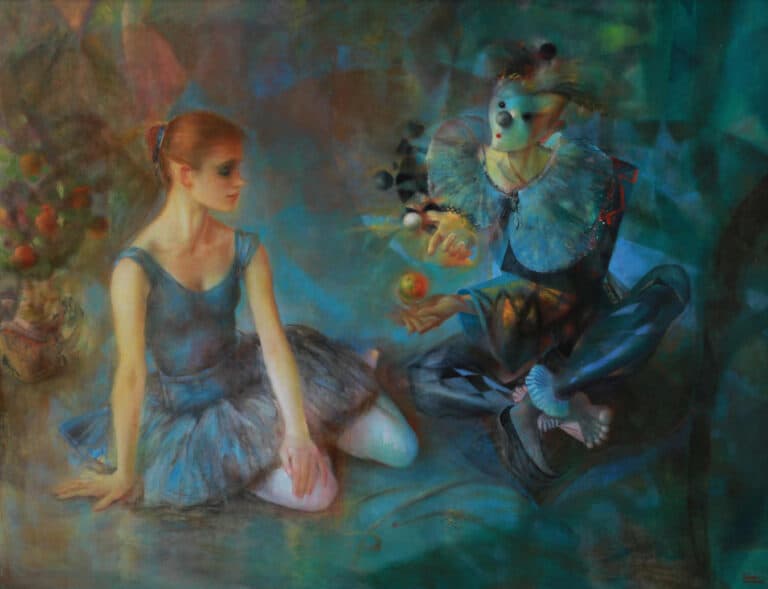
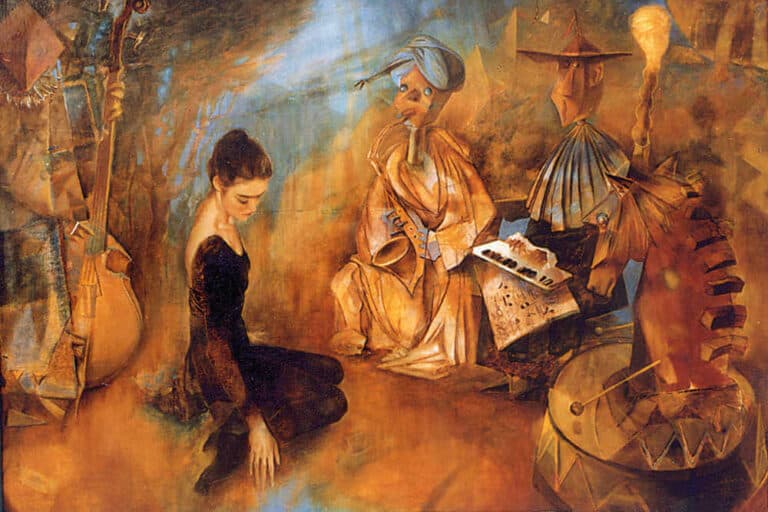
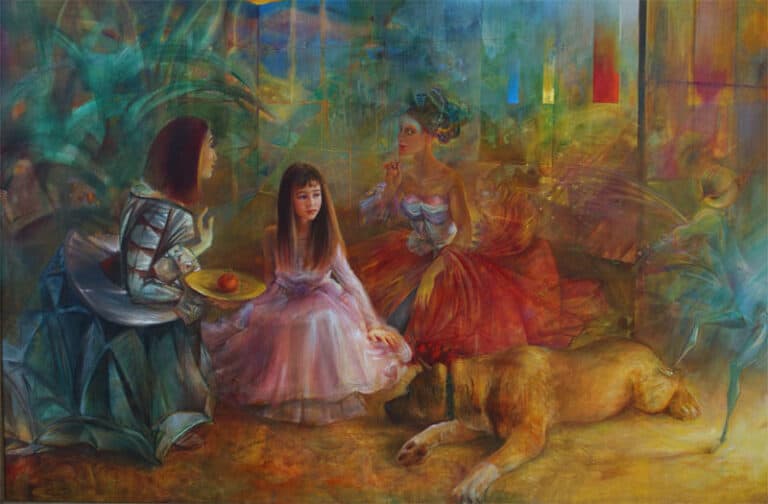
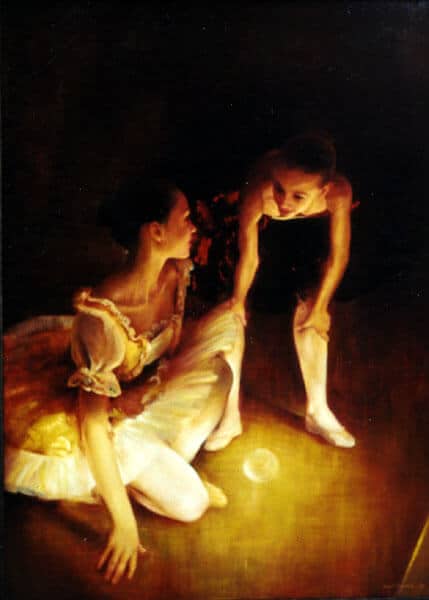
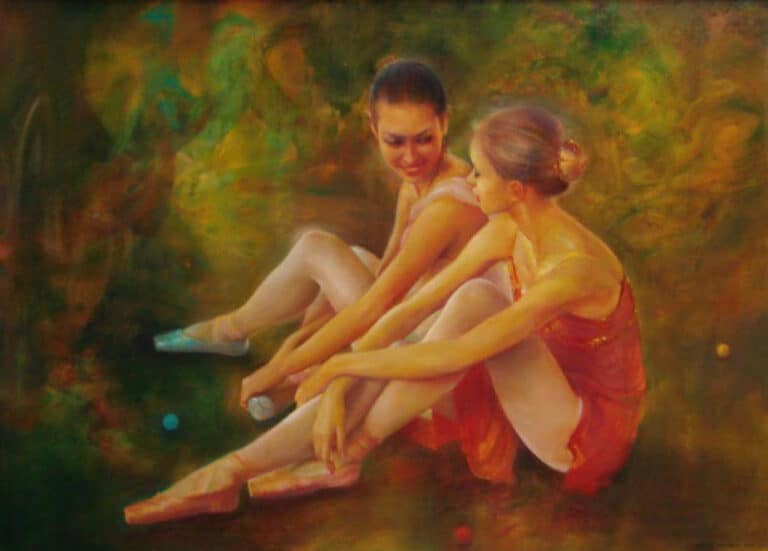
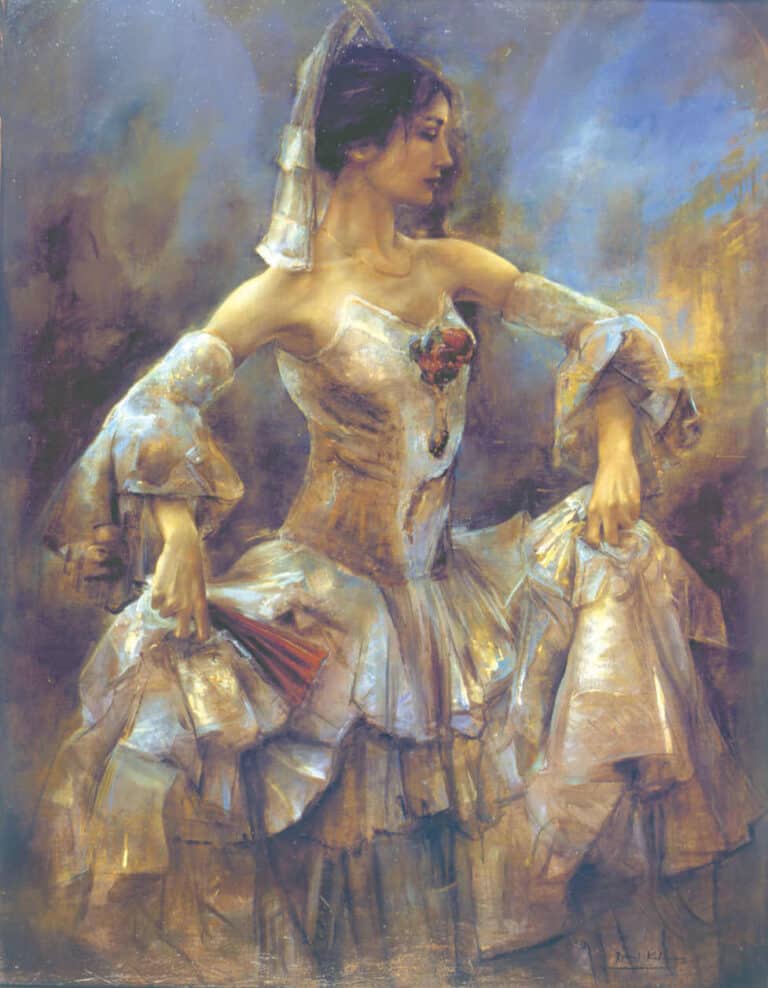
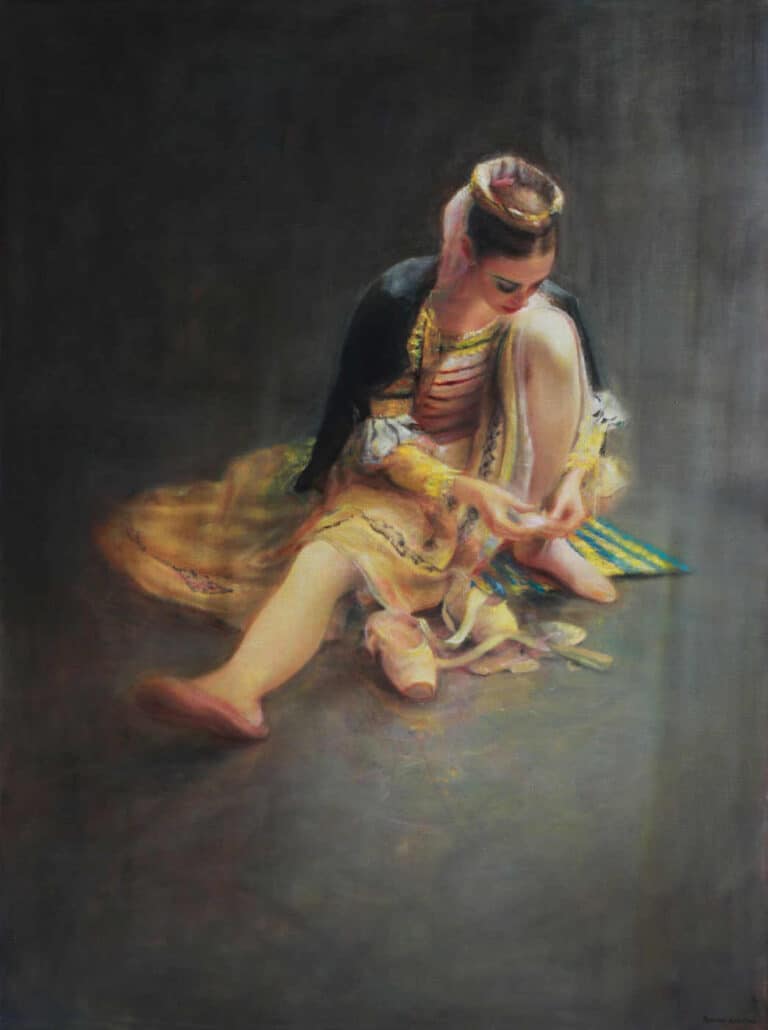
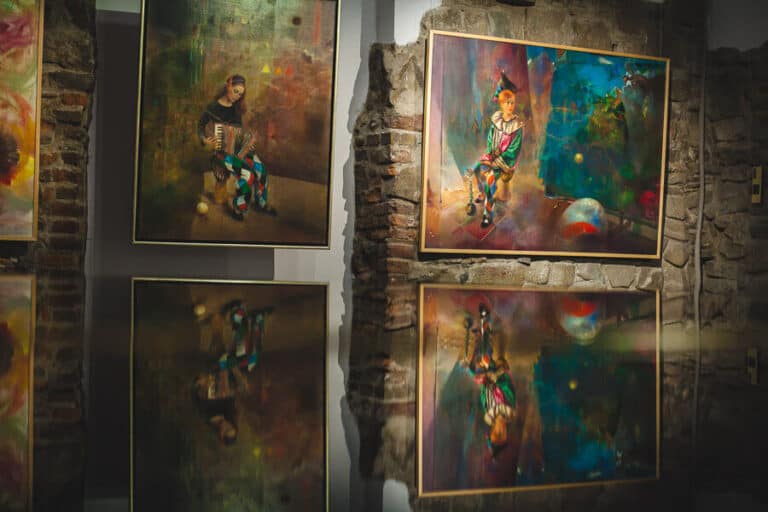
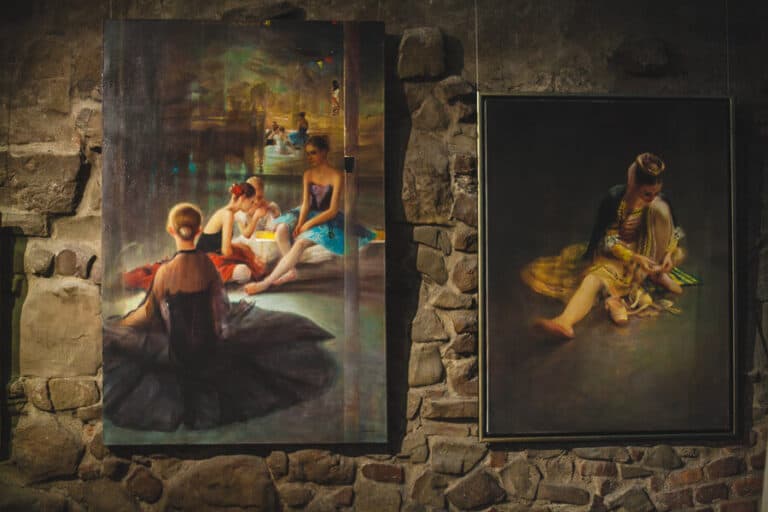
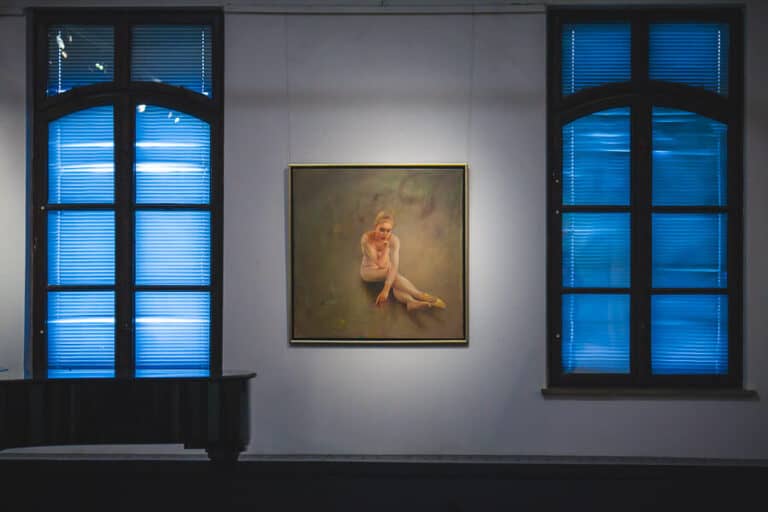
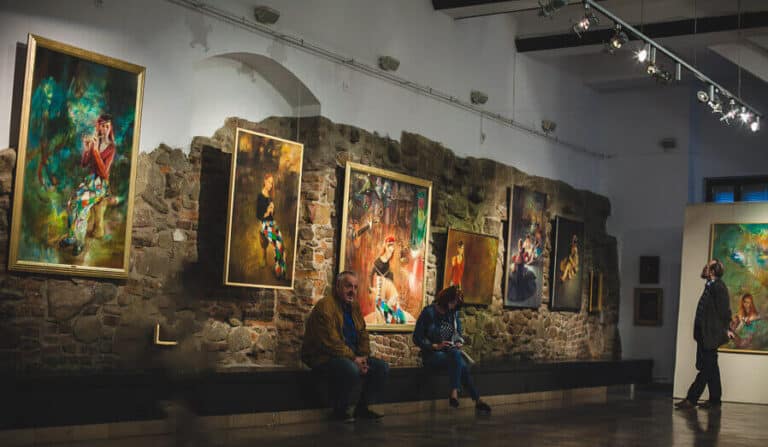
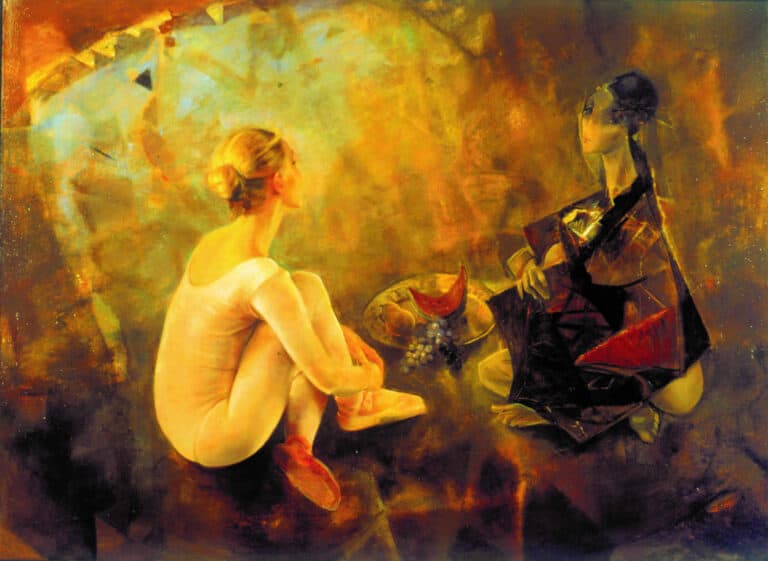
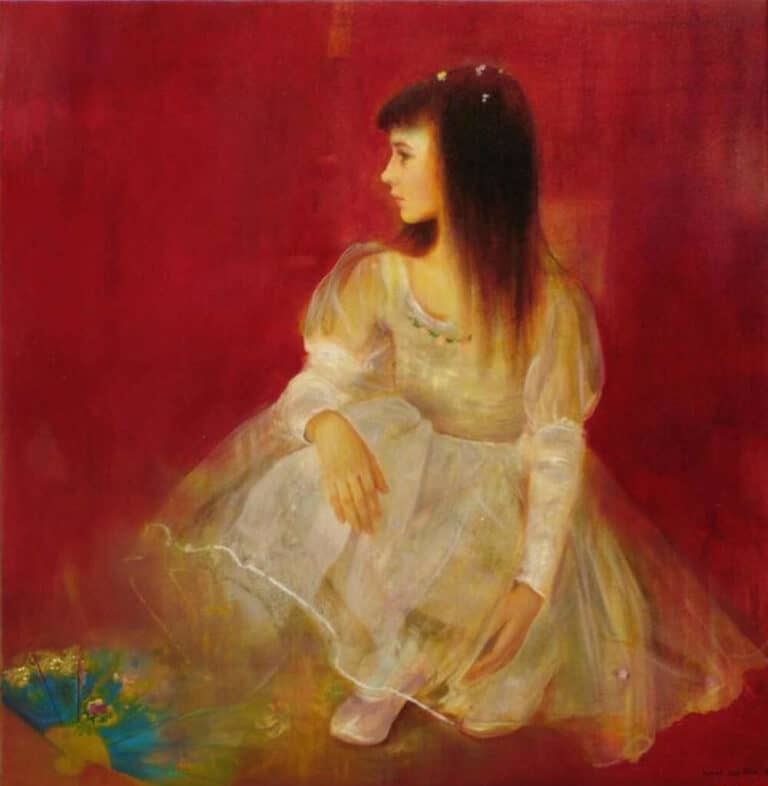
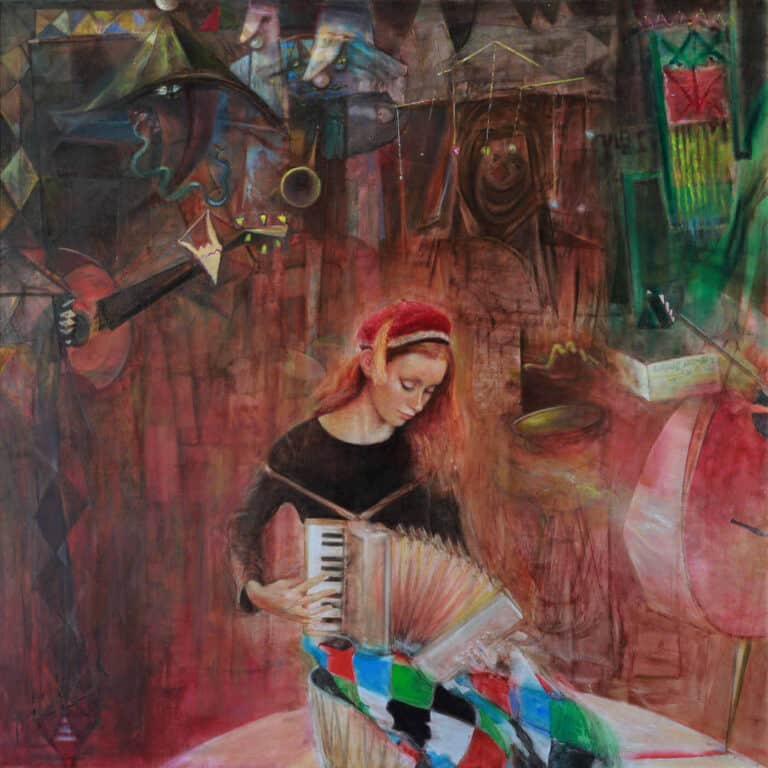
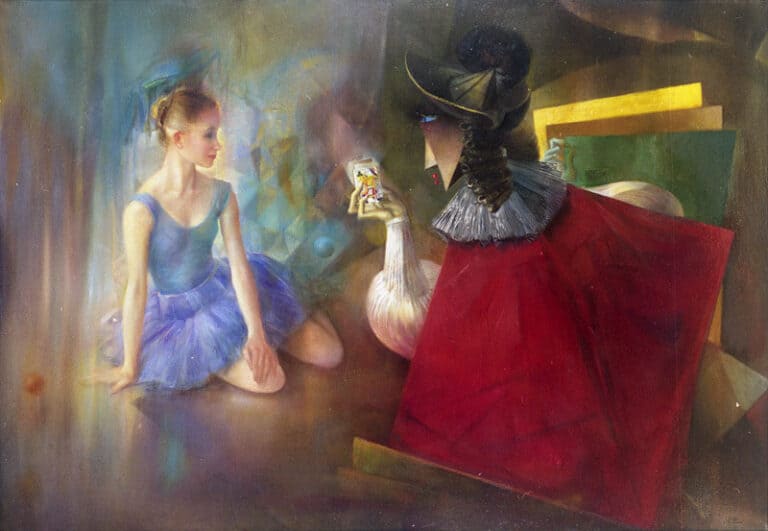
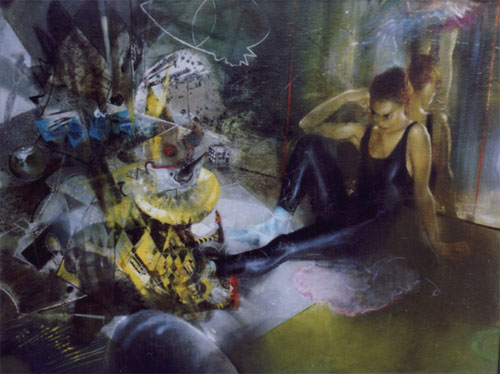
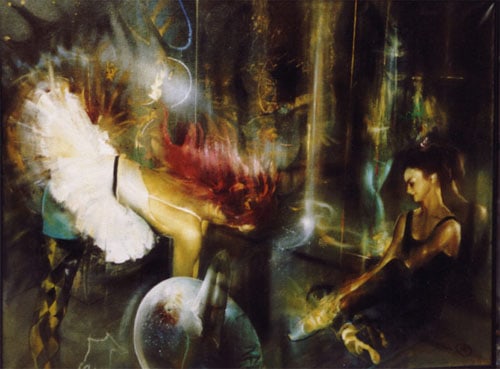
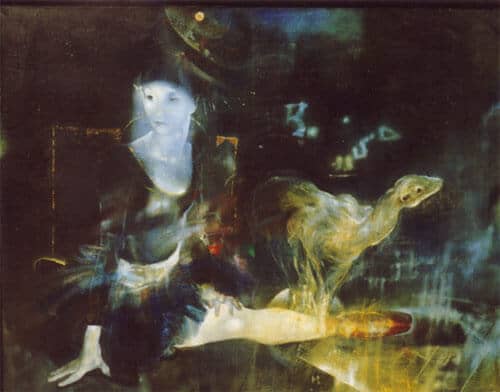
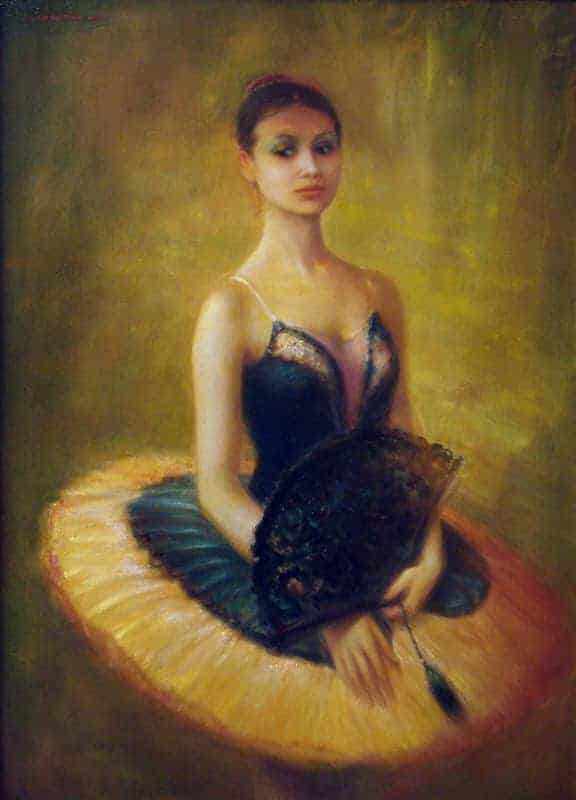
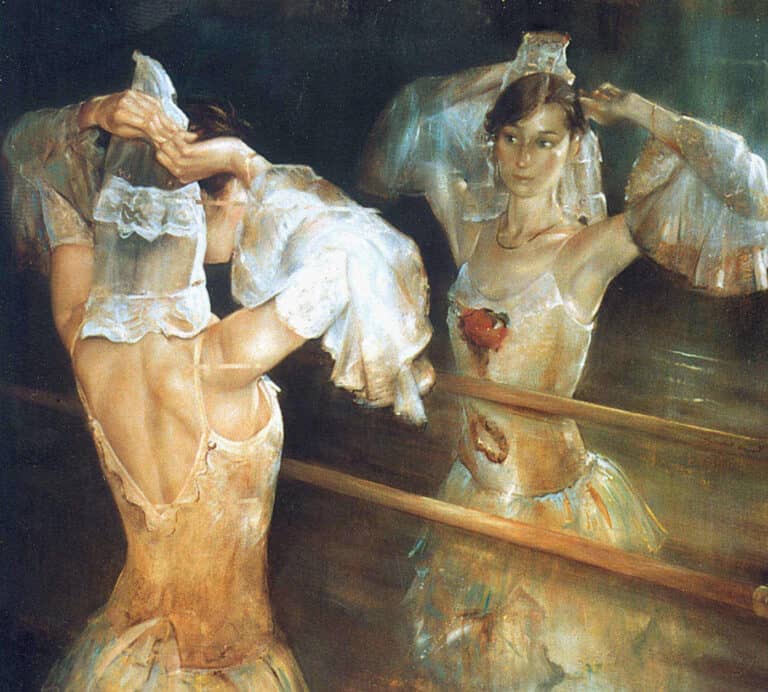
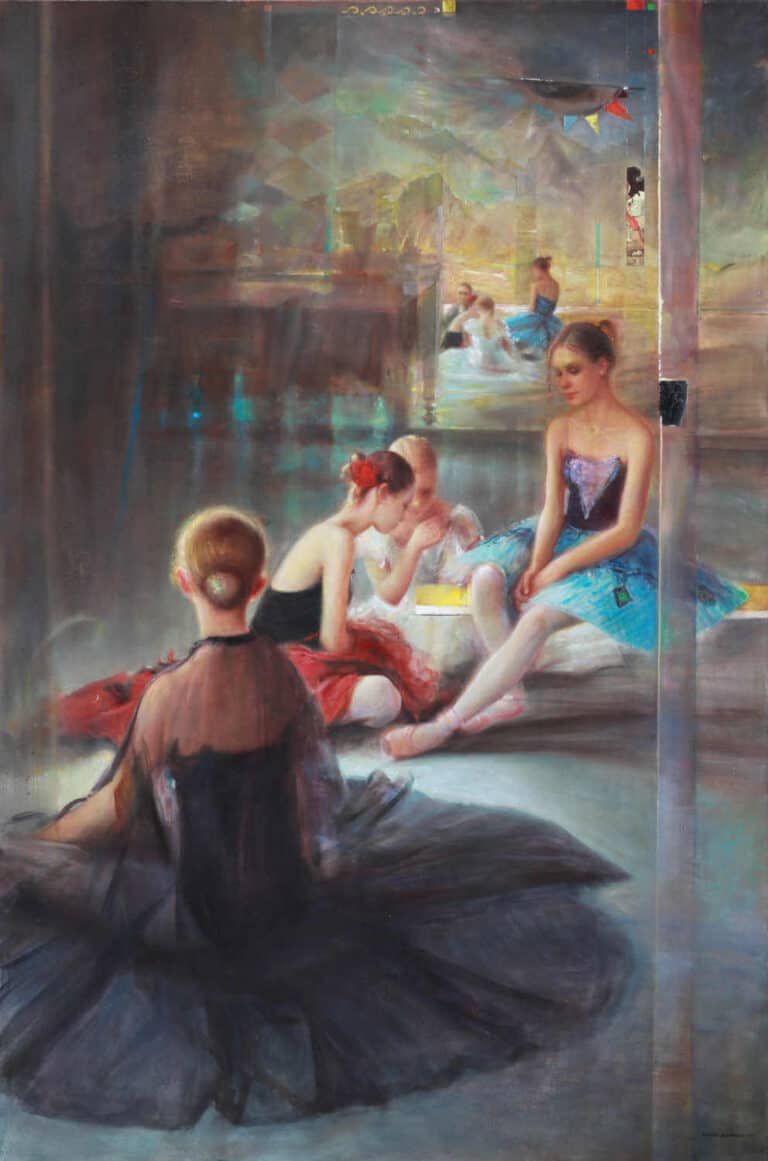
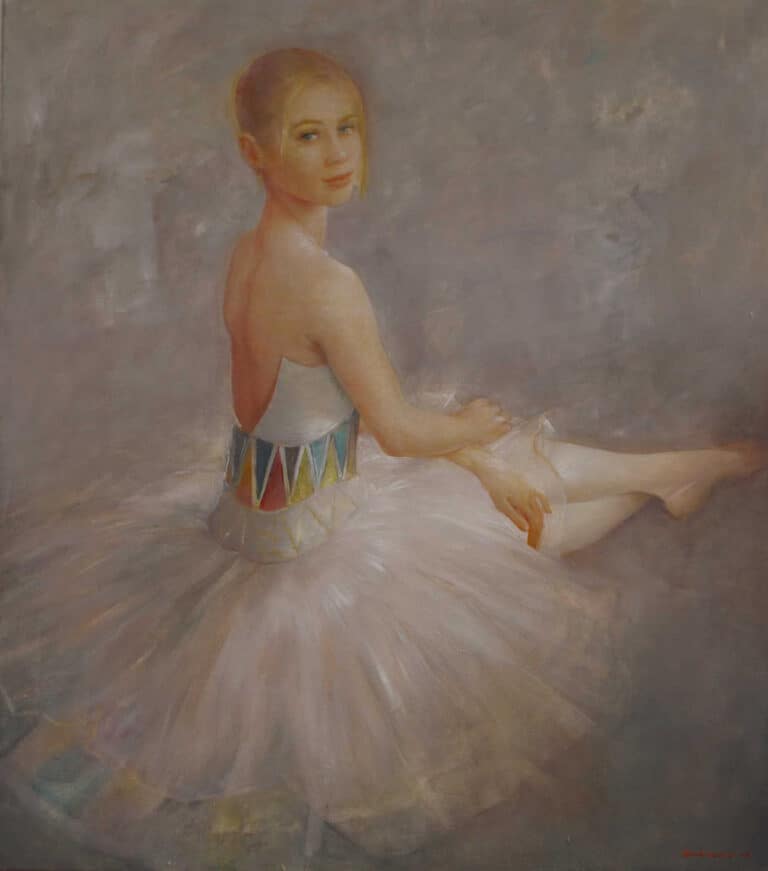
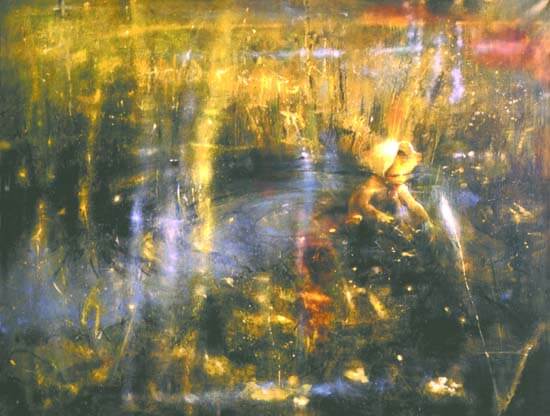
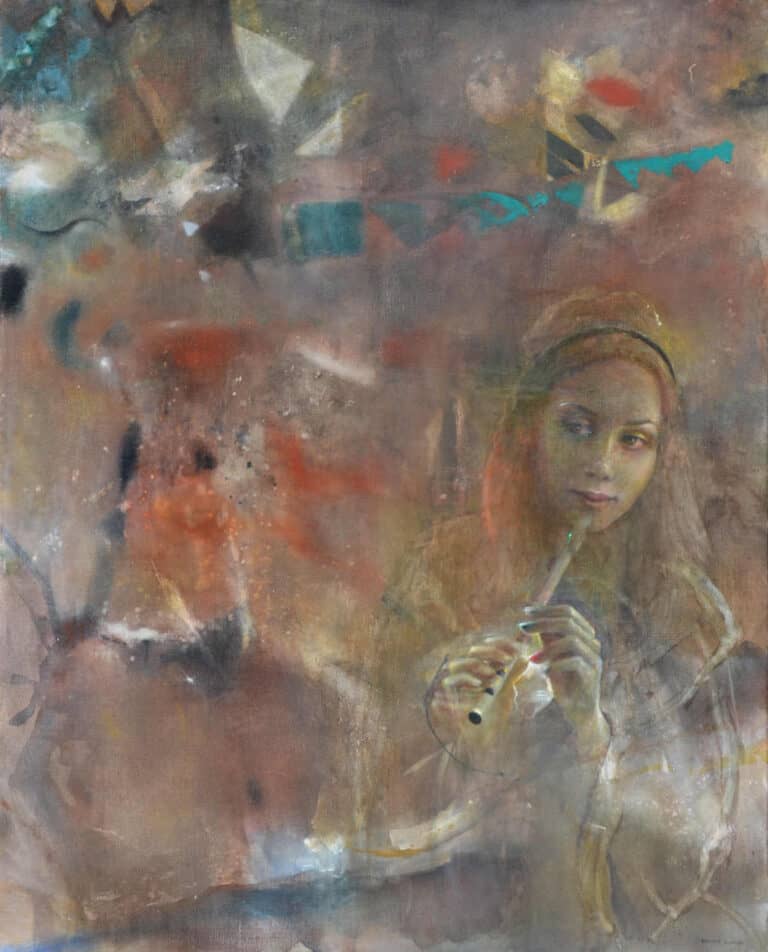
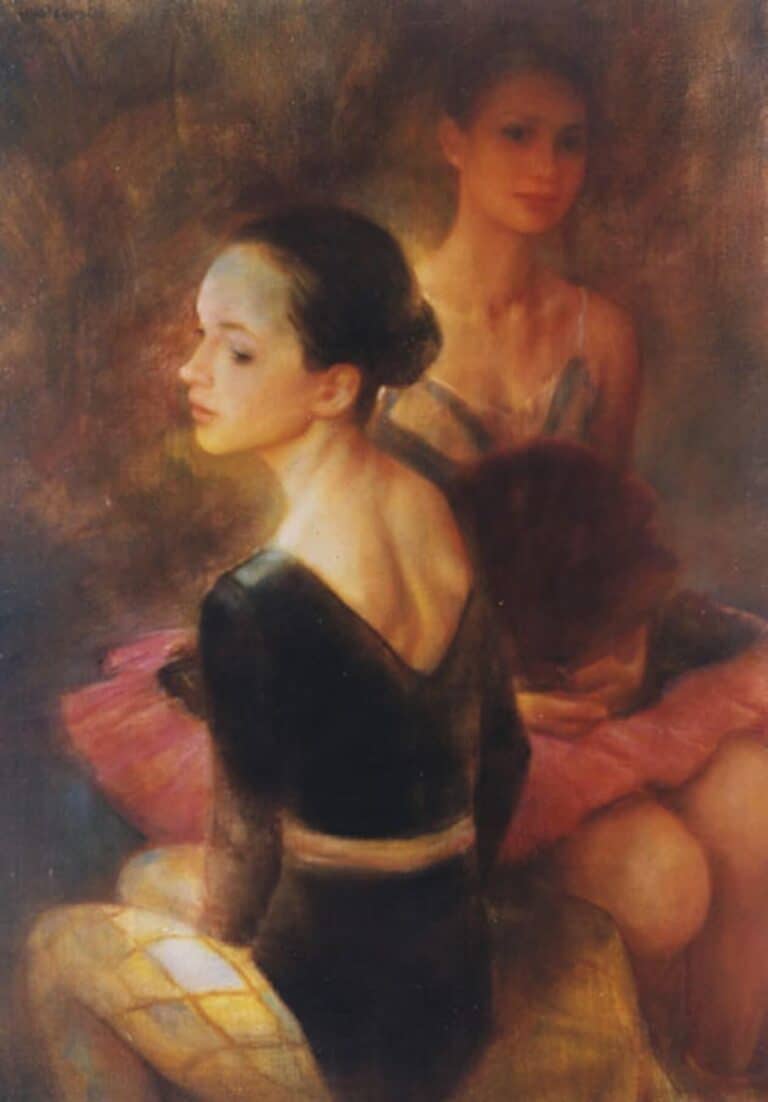
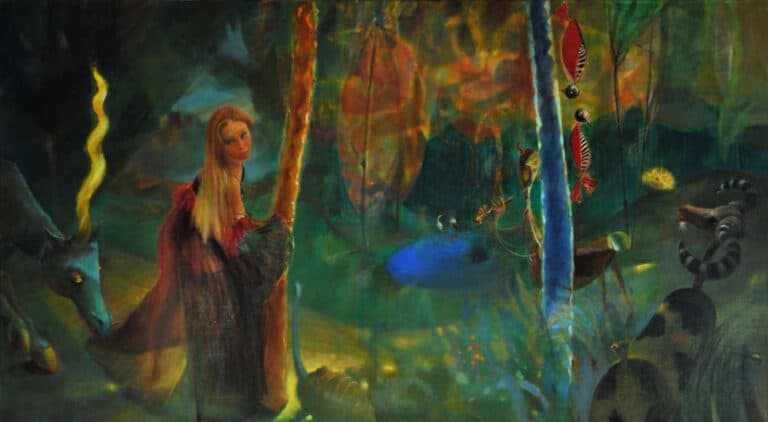

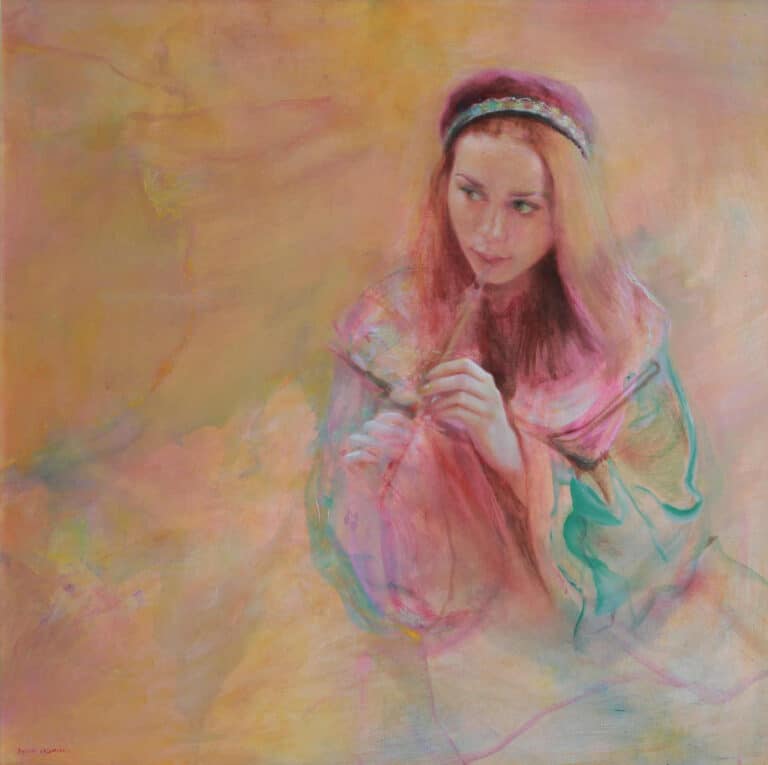
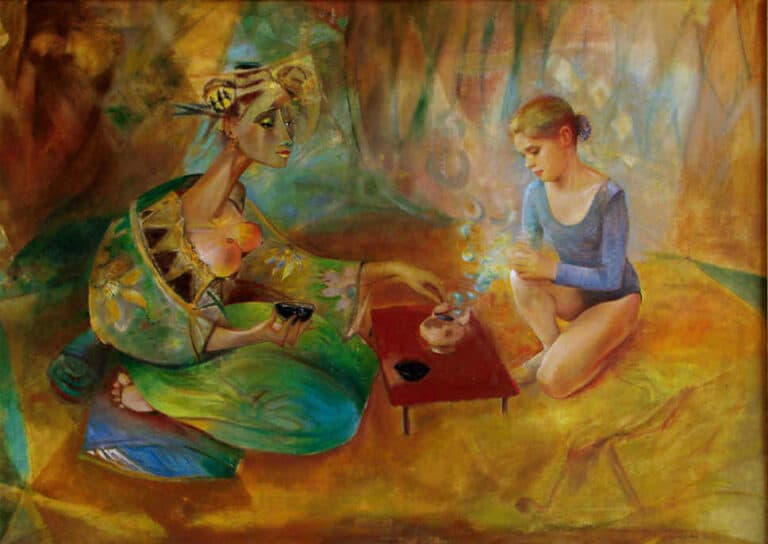
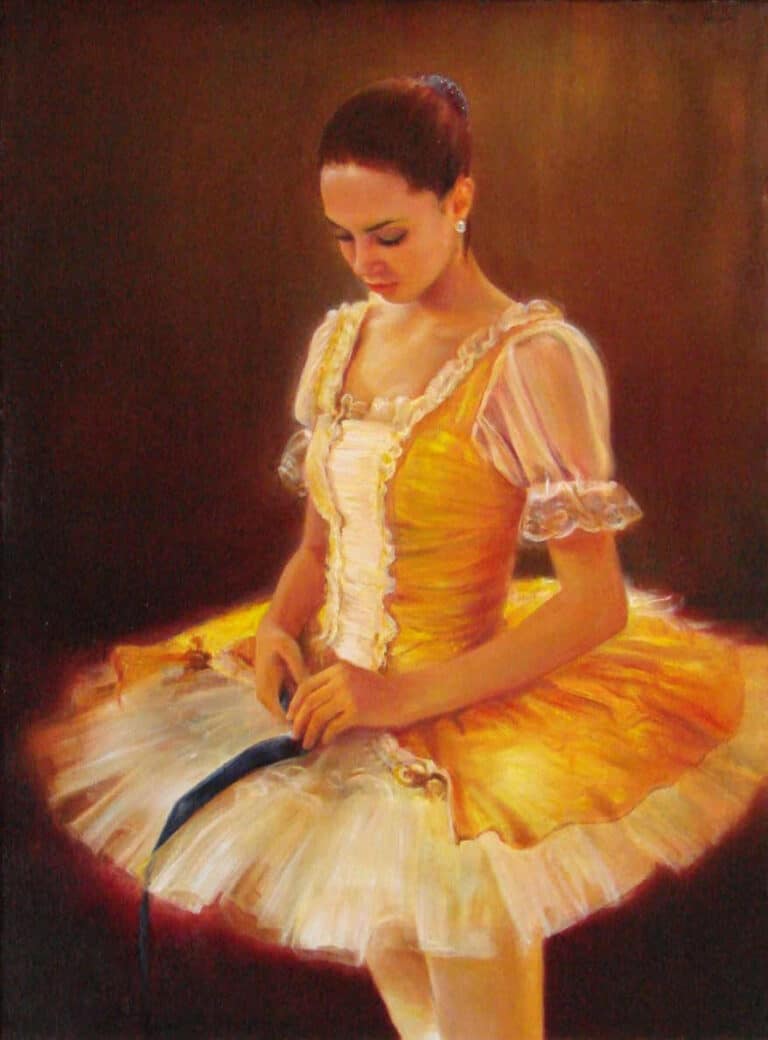
"Among ballet dancers"
The characters from Kalamarz’s paintings – fragile, ethereal and volatile, are looking at the viewer with an ironic half smile. Among the theatrical scenery, props out of a theatrical illusion, birds, masks, mirrors and shells, wearing fancy dress they are sitting and gazing into the space. There is no trace of coquetry in them. But they are aware of the fact that they are taking part in a secret mystery – the mystery of life.
The girls from the stories told by the painter are sages. Their wisdom is brought out of life’s darkness by means of spot lighting. This technique approximates Kalamarz’s paintings to Spanish painting techniques and Dutch Baroque artists. On the other hand, the fragility and delicacy of the girls’ bodies is reminiscent of medieval sculptures, for instance the famous Madonna of Krużlowa.
The girls, actresses in the theatre of life, have an ability to open to another world – the spiritual world. Kalamarz’s paintings, suspended between the reality and the sky, are “windows to infinity” through which the other world reaches the viewer – like a fragment of the mystery. The paintings’ characters seem to have taken a rest for a while, on their way to their destiny. They are wanderers, tired of the passage of time, aware of the tragedy of their passing life.
But moving, wandering is acceptance of transition. The girls who sat down to rest for a while did stop the time. They are contemplating the sense of existence looking at their mirror reflections, cringing in front of the viewers, looking into the eye of their alter ego – the mysterious harlequin out of the Italian plebeian theatre.
The ballet dancers can never get rid of their destiny, the burden of their life experience. So they never take off their masks, costumes, ballet skirts just as we never take off our skin.
However, one should never be tempted by the illusion that the artist’s master is Degas, so fascinated with ballet dancers, as the French impressionist shows a fraction of the world. The entangled naked arms of the dancers is only a photographed moment. Kalamarz’s paintings are closer to the tradition of Velasquez’s “Infanta” whose eyes seem to be holding the absolute truth about the world. By means of his ballet dancers, harlequins, pierrots and children the painter transfers his perception of the world usurping the exclusive right to the truth. Because he knows.
ALEKSANDRA KLICH
The girls from the stories told by the painter are sages. Their wisdom is brought out of life’s darkness by means of spot lighting. This technique approximates Kalamarz’s paintings to Spanish painting techniques and Dutch Baroque artists. On the other hand, the fragility and delicacy of the girls’ bodies is reminiscent of medieval sculptures, for instance the famous Madonna of Krużlowa.
The girls, actresses in the theatre of life, have an ability to open to another world – the spiritual world. Kalamarz’s paintings, suspended between the reality and the sky, are “windows to infinity” through which the other world reaches the viewer – like a fragment of the mystery. The paintings’ characters seem to have taken a rest for a while, on their way to their destiny. They are wanderers, tired of the passage of time, aware of the tragedy of their passing life.
But moving, wandering is acceptance of transition. The girls who sat down to rest for a while did stop the time. They are contemplating the sense of existence looking at their mirror reflections, cringing in front of the viewers, looking into the eye of their alter ego – the mysterious harlequin out of the Italian plebeian theatre.
The ballet dancers can never get rid of their destiny, the burden of their life experience. So they never take off their masks, costumes, ballet skirts just as we never take off our skin.
However, one should never be tempted by the illusion that the artist’s master is Degas, so fascinated with ballet dancers, as the French impressionist shows a fraction of the world. The entangled naked arms of the dancers is only a photographed moment. Kalamarz’s paintings are closer to the tradition of Velasquez’s “Infanta” whose eyes seem to be holding the absolute truth about the world. By means of his ballet dancers, harlequins, pierrots and children the painter transfers his perception of the world usurping the exclusive right to the truth. Because he knows.
ALEKSANDRA KLICH